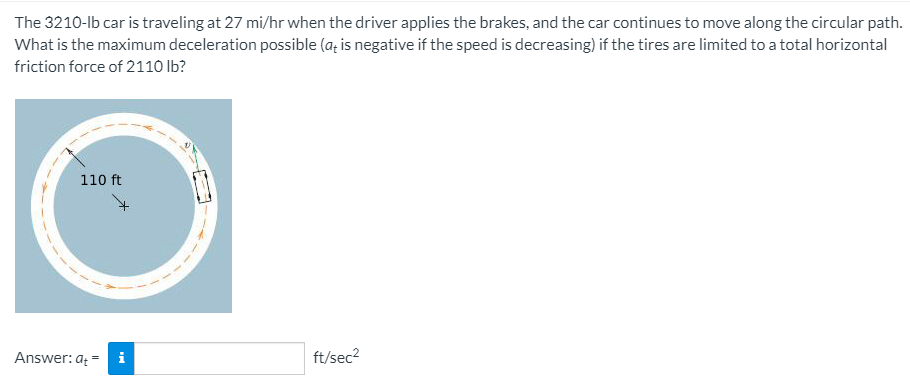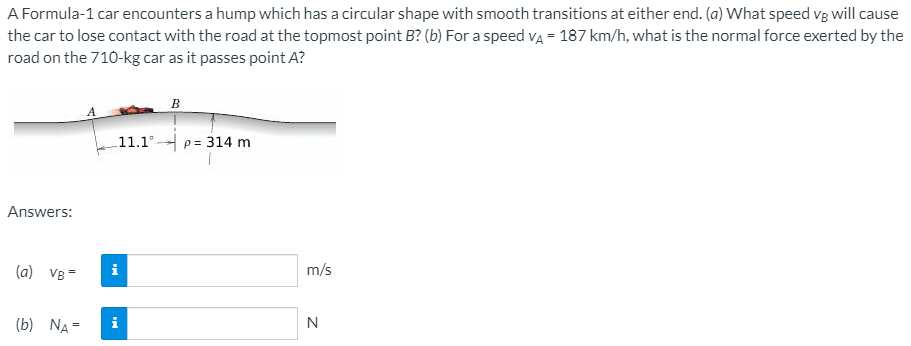The 3210-lb car is traveling at 27 mi/hr when the driver applies the brakes, and the car continues to move along the circular path. What is the maximum deceleration possible (a; is negative if the speed is decreasing) if the tires are limited to a total horizontal friction force of 2110 lb? 110 ft Answer: a = i ft/sec?
The 3210-lb car is traveling at 27 mi/hr when the driver applies the brakes, and the car continues to move along the circular path. What is the maximum deceleration possible (a; is negative if the speed is decreasing) if the tires are limited to a total horizontal friction force of 2110 lb? 110 ft Answer: a = i ft/sec?
Physics for Scientists and Engineers: Foundations and Connections
1st Edition
ISBN:9781133939146
Author:Katz, Debora M.
Publisher:Katz, Debora M.
Chapter5: Newton's Laws Of Motion
Section: Chapter Questions
Problem 63PQ: A 75.0-g arrow, fired at a speed of 110 m/s to the left, impacts a tree, which it penetrates to a...
Related questions
Question

Transcribed Image Text:The 3210-lb car is traveling at 27 mi/hr when the driver applies the brakes, and the car continues to move along the circular path.
What is the maximum deceleration possible (a; is negative if the speed is decreasing) if the tires are limited to a total horizontal
friction force of 2110 lb?
110 ft
Answer: a =
i
ft/sec2

Transcribed Image Text:A Formula-1 car encounters a hump which has a circular shape with smooth transitions at either end. (a) What speed vg will cause
the car to lose contact with the road at the topmost point B? (b) For a speed va = 187 km/h, what is the normal force exerted by the
road on the 710-kg car as it passes point A?
B
11.1°-
p = 314 m
Answers:
(a) VB =
i
m/s
(b) NA =
i
N
Expert Solution
This question has been solved!
Explore an expertly crafted, step-by-step solution for a thorough understanding of key concepts.
This is a popular solution!
Trending now
This is a popular solution!
Step by step
Solved in 6 steps with 4 images

Knowledge Booster
Learn more about
Need a deep-dive on the concept behind this application? Look no further. Learn more about this topic, physics and related others by exploring similar questions and additional content below.Recommended textbooks for you

Physics for Scientists and Engineers: Foundations…
Physics
ISBN:
9781133939146
Author:
Katz, Debora M.
Publisher:
Cengage Learning

Physics for Scientists and Engineers: Foundations…
Physics
ISBN:
9781133939146
Author:
Katz, Debora M.
Publisher:
Cengage Learning